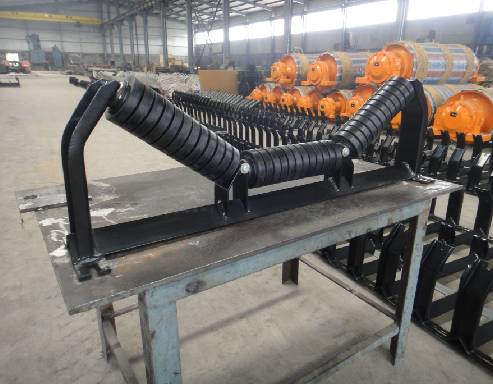 Afrikaans
Afrikaans  Albanian
Albanian  Amharic
Amharic  Arabic
Arabic  Armenian
Armenian  Azerbaijani
Azerbaijani  Basque
Basque  Belarusian
Belarusian  Bengali
Bengali  Bosnian
Bosnian  Bulgarian
Bulgarian  Catalan
Catalan  Cebuano
Cebuano  Corsican
Corsican  Croatian
Croatian  Czech
Czech  Danish
Danish  Dutch
Dutch  English
English  Esperanto
Esperanto  Estonian
Estonian  Finnish
Finnish  French
French  Frisian
Frisian  Galician
Galician  Georgian
Georgian  German
German  Greek
Greek  Gujarati
Gujarati  Haitian Creole
Haitian Creole  hausa
hausa  hawaiian
hawaiian  Hebrew
Hebrew  Hindi
Hindi  Miao
Miao  Hungarian
Hungarian  Icelandic
Icelandic  igbo
igbo  Indonesian
Indonesian  irish
irish  Italian
Italian  Japanese
Japanese  Javanese
Javanese  Kannada
Kannada  kazakh
kazakh  Khmer
Khmer  Rwandese
Rwandese  Korean
Korean  Kurdish
Kurdish  Kyrgyz
Kyrgyz  Lao
Lao  Latin
Latin  Latvian
Latvian  Lithuanian
Lithuanian  Luxembourgish
Luxembourgish  Macedonian
Macedonian  Malgashi
Malgashi  Malay
Malay  Malayalam
Malayalam  Maltese
Maltese  Maori
Maori  Marathi
Marathi  Mongolian
Mongolian  Myanmar
Myanmar  Nepali
Nepali  Norwegian
Norwegian  Norwegian
Norwegian  Occitan
Occitan  Pashto
Pashto  Persian
Persian  Polish
Polish  Portuguese
Portuguese  Punjabi
Punjabi  Romanian
Romanian  Russian
Russian  Samoan
Samoan  Scottish Gaelic
Scottish Gaelic  Serbian
Serbian  Sesotho
Sesotho  Shona
Shona  Sindhi
Sindhi  Sinhala
Sinhala  Slovak
Slovak  Slovenian
Slovenian  Somali
Somali  Spanish
Spanish  Sundanese
Sundanese  Swahili
Swahili  Swedish
Swedish  Tagalog
Tagalog  Tajik
Tajik  Tamil
Tamil  Tatar
Tatar  Telugu
Telugu  Thai
Thai  Turkish
Turkish  Turkmen
Turkmen  Ukrainian
Ukrainian  Urdu
Urdu  Uighur
Uighur  Uzbek
Uzbek  Vietnamese
Vietnamese  Welsh
Welsh  Bantu
Bantu  Yiddish
Yiddish  Yoruba
Yoruba  Zulu
Zulu Different Types of Conveyor Belt Rollers and Their Applications for Efficient Material Handling
Understanding Conveyor Belt Roller Types
Conveyor belt systems are integral to various industries, serving as the backbone for transporting materials efficiently. A crucial component of these systems is the conveyor belt roller, which supports the belt and facilitates smooth material movement. Understanding the different types of conveyor belt rollers can significantly enhance operational efficiency and maintenance strategies.
1. Idler Rollers
Idler rollers are the most common type of roller used in conveyor systems. Positioned along the conveyor's length, these rollers support the belt and help maintain its alignment. Idler rollers come in various shapes and sizes, including smooth, rubberized, and grooved, to suit different applications. Their primary purpose is to provide support without any drive mechanism, acting as return and carry rollers.
Two main types of idler rollers are
- Carrier Rollers These are used on the carrying side of the conveyor belt. They bear the weight of the material being transported and help facilitate the smooth flow of the belt. - Return Rollers Located on the return side of the conveyor belt, return rollers ensure that the belt returns to the loading area smoothly and without sagging.
2. Drive Rollers
Drive rollers, or drive pulleys, are active rollers that provide the driving force for the conveyor belt. They are connected to a motor, which turns the roller and, in turn, moves the belt. Depending on the design of the conveyor system, a drive roller can be located at the end of the conveyor or in the middle.
Drive rollers can vary in design
- Lagged Drive Rollers These rollers have a layer of material, such as rubber, attached to their surface to enhance friction and grip, improving traction and efficiency.
- Crowned Rollers These have a slightly convex shape which helps keep the conveyor belt centralized and prevents it from drifting off the path.
conveyor belt roller types

Return rollers are specifically designed to support the empty return portion of the conveyor belt. They prevent sagging and maintain the belt's alignment as it moves back to the loading point. Return rollers can be
- Flat Return Rollers These are simple, smooth rollers that support the belt’s return without adding friction.
- Rubber-Covered Return Rollers Designed to enhance grip and traction, they are useful in applications where the belt carries lighter loads to prevent slipping.
4. Impact Rollers
In applications where heavy materials are loaded onto the conveyor, impact rollers come into play. These rollers are strategically placed at loading zones to absorb the impact that occurs when materials are dropped onto the conveyor. Impact rollers have a robust design, often featuring rubber cushioning to minimize wear and tear and to protect the belt from damage.
5. Self-Cleaning Rollers
Self-cleaning rollers are designed with a unique shape or surface features that help prevent material build-up on the roller's surface. This is particularly useful in industries where sticky or fine materials are conveyed, as it reduces maintenance efforts and keeps the conveyor system running smoothly.
6. Specialty Rollers
In addition to the standard types mentioned, there are specialty rollers designed for specific applications. These include
- High-temperature rollers for environments exposed to extreme heat. - Corrosion-resistant rollers made from materials that withstand harsh chemicals. - Food-grade rollers that comply with health standards for the food industry.
Conclusion
Selecting the right type of conveyor belt roller is vital for ensuring the efficiency and longevity of a conveyor system. Each type of roller serves a specific purpose, and understanding these distinctions can help operators optimize their systems for various materials and conditions. By considering factors such as the type of materials being transported, the environmental conditions, and the overall design of the conveyor system, industries can enhance productivity and minimize downtime. Investing in the appropriate conveyor belt rollers ultimately translates to smoother operations and reduced maintenance costs.
-
Revolutionizing Conveyor Reliability with Advanced Rubber Lagging PulleysNewsJul.22,2025
-
Powering Precision and Durability with Expert Manufacturers of Conveyor ComponentsNewsJul.22,2025
-
Optimizing Conveyor Systems with Advanced Conveyor AccessoriesNewsJul.22,2025
-
Maximize Conveyor Efficiency with Quality Conveyor Idler PulleysNewsJul.22,2025
-
Future-Proof Your Conveyor System with High-Performance Polyurethane RollerNewsJul.22,2025
-
Driving Efficiency Forward with Quality Idlers and RollersNewsJul.22,2025





























